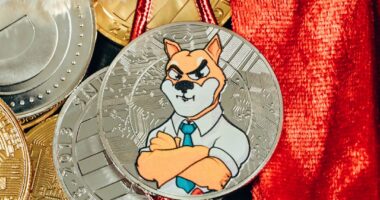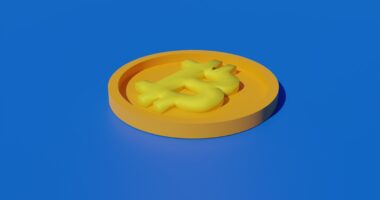Non-fungible tokens (NFTs) are unique digital assets that have gained significant attention in recent years. Unlike fungible cryptocurrencies such as Bitcoin, NFTs represent ownership of specific digital items, including artwork, videos, music, and other forms of digital content. Each NFT is distinct and cannot be exchanged on a one-to-one basis with other tokens.
The creation of an NFT, known as minting, involves generating a digital certificate of ownership for a particular piece of content. This certificate is recorded on a blockchain, typically Ethereum, which provides a secure and transparent record of the token’s authenticity and ownership history. NFTs have created new opportunities for artists and content creators to monetize their digital works.
By minting NFTs, creators can sell unique digital assets directly to collectors, potentially earning royalties on future sales. This model has the potential to disrupt traditional art markets and change how digital content is valued and traded. However, the rise of NFTs has also sparked debates surrounding environmental concerns related to blockchain energy consumption, issues of digital scarcity and reproduction, and the broader implications of digital ownership in the art world and beyond.
Key Takeaways
- Minting NFTs involves creating a unique digital asset and recording it on a blockchain.
- Ethereum (ETH) and Bitcoin (BTC) are commonly used for minting NFTs due to their smart contract capabilities.
- Digital creation raises concerns about ownership, authenticity, and the potential for exploitation.
- NFT ownership and reproduction raise ethical questions about artists’ rights and fair compensation.
- Minting NFTs has a significant environmental impact due to the energy consumption of blockchain networks.
The Process of Minting NFTs Using Ethereum (ETH) and Bitcoin (BTC)
Setting Up for NFT Minting on Ethereum
To mint an NFT on Ethereum, an artist or creator needs to set up a digital wallet that is compatible with the Ethereum blockchain. They then need to create a digital representation of their artwork or content, along with any additional metadata such as the title, description, and edition number.
Minting the NFT on Ethereum
Once the digital representation and metadata are ready, the artist or creator can use a specialized NFT marketplace or platform to upload their content and create a new NFT. This process typically involves paying a gas fee, which is a small amount of Ethereum used to process and validate the transaction on the blockchain.
Minting NFTs on Bitcoin and Other Blockchains
While Bitcoin is not as commonly used for minting NFTs due to its limited smart contract capabilities, emerging technologies and protocols aim to enable the creation of NFTs on the Bitcoin blockchain. One such example is the RSK network, a sidechain to the Bitcoin blockchain that supports smart contracts and NFTs. The process of minting NFTs on Bitcoin using RSK is similar to that of Ethereum, involving the creation of a digital wallet, the upload of content and metadata, and the payment of transaction fees. As the technology continues to evolve, we can expect to see more options for minting NFTs on different blockchains in the future.
Exploring the Unsettling Realities of Digital Creation

The rise of NFTs has brought to light some unsettling realities about digital creation and ownership. One of the most pressing issues is the ease with which digital content can be copied, shared, and reproduced without the consent of the original creator. This has led to widespread piracy and copyright infringement, depriving artists and creators of their rightful income and recognition.
Minting NFTs offers a potential solution to this problem by providing a secure and immutable record of ownership on the blockchain. However, it also raises questions about who has the right to monetize and profit from digital content, especially when it has been created collaboratively or incorporates existing intellectual property. Another unsettling reality is the potential for fraud and misrepresentation in the NFT market.
Due to the decentralized nature of blockchain technology, it can be difficult to verify the authenticity and provenance of NFTs, leading to concerns about counterfeit or stolen digital assets being sold as genuine. This has prompted calls for greater regulation and oversight in the NFT space to protect both creators and collectors from fraudulent activity. Additionally, there are concerns about the environmental impact of minting NFTs, particularly in terms of energy consumption and carbon emissions.
NFTs and the Ethical Implications of Ownership and Reproduction
The concept of ownership and reproduction in the context of NFTs raises complex ethical questions that have yet to be fully resolved. On one hand, minting an NFT can provide artists with a means to assert their ownership rights over their digital creations and receive fair compensation for their work. This has the potential to empower artists who have historically struggled to monetize their art in traditional markets.
However, it also raises questions about who has the right to profit from digital content, especially when it has been created collaboratively or incorporates existing intellectual property. Furthermore, the ability to tokenize and trade digital assets as NFTs introduces new challenges related to copyright law and intellectual property rights. For example, if an artist mints an NFT based on a photograph taken by someone else, who holds the rights to the NFT?
Is it the original photographer, the artist who created the NFT, or both? These questions highlight the need for clear legal frameworks and standards for ownership and reproduction in the NFT space. Additionally, there are concerns about the potential for exploitation and commodification of digital content, particularly when it comes to sensitive or culturally significant material.
The Environmental Impact of Minting NFTs
The environmental impact of minting NFTs has become a topic of significant concern as the popularity of NFTs continues to grow. The process of minting an NFT involves complex cryptographic calculations that require significant computational power and energy consumption. This has led to criticism from environmental activists who argue that the energy-intensive nature of blockchain technology is contributing to carbon emissions and climate change.
In particular, Ethereum’s proof-of-work consensus mechanism, which is used to validate transactions on the blockchain, has been singled out as a major source of energy consumption. According to some estimates, minting a single NFT on Ethereum can consume as much energy as an average European household uses in a month. This has prompted calls for more sustainable alternatives to proof-of-work consensus mechanisms, such as proof-of-stake or other energy-efficient protocols.
Some artists and creators have also expressed concerns about the environmental impact of minting NFTs and have sought out eco-friendly blockchain platforms or offsetting initiatives to minimize their carbon footprint. As the debate over the environmental impact of NFTs continues, it is clear that finding sustainable solutions will be crucial for the long-term viability of this emerging market.
NFTs and the Future of Digital Art and Collectibles

New Opportunities for Artists and Creators
This has already led to a surge in interest from both established artists and emerging creators who see NFTs as a way to connect directly with their audience and monetize their work in innovative ways.
Tokenizing Digital Assets
In addition to art, NFTs are also being used to tokenize other types of digital assets such as music, videos, virtual real estate, and even virtual goods in online games. This has created new opportunities for creators in these industries to explore alternative revenue streams and engage with their fans in novel ways.
Experimentation with New Forms of Digital Art
Furthermore, NFTs have sparked a wave of experimentation with new forms of digital art that would not have been possible without blockchain technology. From generative art to interactive experiences, artists are pushing the boundaries of what is considered collectible in the digital realm.
Navigating the Complexities of NFTs in the News and Media
The rise of NFTs has captured widespread attention in the news and media, sparking debates about their impact on art markets, copyright law, environmental sustainability, and cultural heritage. While some view NFTs as a revolutionary force that empowers artists and creators in the digital age, others are critical of their potential negative consequences for artistic integrity, ownership rights, and environmental conservation. In particular, high-profile sales of NFTs by well-known artists and celebrities have generated headlines around the world, drawing both admiration and skepticism from industry experts and commentators.
The involvement of major auction houses and art galleries in hosting NFT sales has further fueled public interest in this emerging market. At the same time, concerns about speculative bubbles and market volatility have led some to question whether NFTs are a sustainable investment or merely a passing fad. As more individuals and organizations seek to navigate the complexities of NFTs, it is clear that there is a need for greater transparency, accountability, and ethical standards in this rapidly evolving space.
Whether it be through industry self-regulation or government intervention, finding a balance between innovation and responsibility will be crucial for shaping the future of NFTs in a way that benefits both creators and collectors alike. In conclusion, while minting NFTs has opened up new opportunities for artists and creators in the digital age, it has also raised complex ethical, legal, environmental, and cultural challenges that require careful consideration. As this technology continues to evolve, it will be important for all stakeholders – from artists and collectors to regulators and technologists – to work together in addressing these issues in order to ensure that NFTs can fulfill their potential as a transformative force in the world of digital art and collectibles.
FAQs
What is NFT minting?
NFT minting refers to the process of creating a unique digital asset on a blockchain. This process involves turning a digital file, such as an image, video, or audio clip, into a one-of-a-kind token that can be bought, sold, and traded.
How is an NFT minted?
To mint an NFT, a creator typically uses a specialized platform or marketplace that supports NFT creation. They upload their digital file, add metadata and other details, and then pay a fee to have the NFT token created and recorded on the blockchain.
What does it mean for an NFT to be minted?
When an NFT is minted, it becomes a unique, non-fungible token that is recorded on a blockchain. This means that the digital asset is now associated with a specific token ID and can be bought, sold, and owned by individuals.
What are the implications of minting an NFT?
Minting an NFT can have various implications, including issues related to copyright, ownership, and environmental impact. It can also raise questions about the value and authenticity of digital art and other creations.
What is the unsettling truth behind digital creation and NFT minting?
The unsettling truth behind digital creation and NFT minting is that it has raised concerns about the environmental impact of blockchain technology, the potential for copyright infringement and plagiarism, and the commodification of digital art and other creative works. These issues have sparked debates about the ethics and sustainability of NFTs and digital creation.





